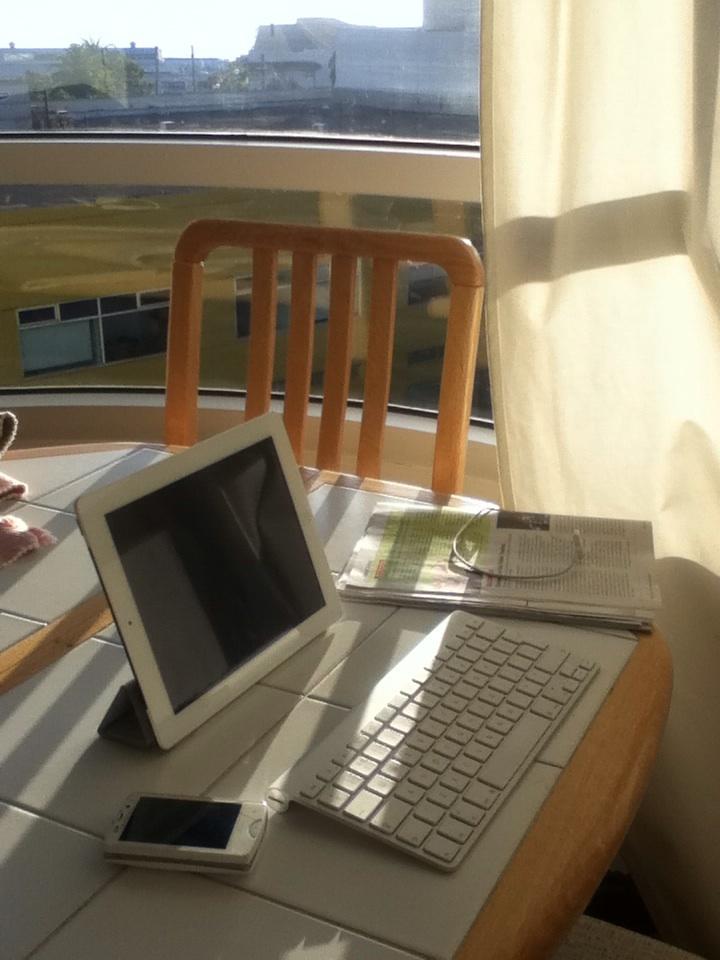No multiple windows in the main view, no easy visible way to switch applications—you have to know a specific set of gestures—and no easy way to start new applications in the compatibility environment that suddenly lost a start button. In short, a set of gestures that are really easy on a tablet end up making life hard when needed to be done with a mouse and keyboard. The gestures are not obvious in either case, but we forgive that on tablets because of the lack of real estate; on desktops with 28" monitors, not having start buttons and task switching widgets is kind of, well, mean, really.
Apart from all that, I may, may, have found another issue with it, which is pretty serious: Windows 8 could be physically painful to use over time.
Every laptop I have seen introduced for Windows 8 has a touch-sensitive display, just like a tablet, which makes total sense if you are going to make a machine to run what is basically a tablet OS with a desktop afterthought. The convertibles take the idea even further: these are tablets to which you can easily attach a rigid keyboard and then have a laptop-like device but that then doesn't have a touchpad or nipple mouse, it's all touch driven. So on portable computing, all Windows 8 machines with a keyboard are touch for moving around with. Desktop machines for Windows 8 are also equipped with touch screens, enabling users to make the gestures that make Windows 8 work.
Well, here's the thing: when travelling or when at work, this has been my computing set-up:

I have been using this for months now, and in the last few weeks I have noticed a knot under my shoulder-blade, a tenseness that is just getting worse and worse in one small spot on my back. It's just not going away. It is making me realise just how many times I am moving that right arm up to press the home button to switch programs, or gesture on the touch screen to make something happen. That movement is constant, lifting my hand from the keyboard, not to a mouse or touchpad that will support my hand and thus my arm, but up to touch something in front of me, making me hold my arm up in the air unsupported, and requiring me to then exert fine motor-control. It's not just a simple once, but all the time while I am behind the set-up. I resent doing so, I keep wishing CMD+Tab worked on the iPad like it does on my macbook to switch programs, and a touch-pad would work so I didn't constantly have to lift my arm and touch the screen and bezel, over and over. And today it hit me: that's why the muscles that hold my arm up when extended are hurting. Over-use.
Using an iPad with a keyboard is a minority use-case, as we say in the User Experience business: there aren't that many people doing it because it is not a compelling scenario. People with serious typing to do use proper laptops and desktops with proper big keyboards and mice. But Microsoft and its hardware partners are about to unleash a tidal wave of machines that really do have touch+gesture as their main paradigm: convertible tablets, touch-enabled desktops. Microsoft itself is explicitly making a keyboard cover for their tablet, almost built-in, meant to be used like the set-up in the picture. (Edit: Note the Surface keyboard case does have a trackpad. But, also keep your eyes open for reviewers saying getting to the hidden controls is cumbersome with the mouse or trackpad.) From a minority use-case this mode of interacting is becoming a blessed paradigm.
This is going to hurt a lot of people. Seriously, if you are buying a new Windows 8 device and are not using it in tablet mode on your lap, or cradled in your arm for most of the time, if the screen stands mainly upright and is not flat on the desk like a book so you are pointing down when you gesture on it, get a pointing device that rests on the desk, like a mouse or track-pad. Insist on it. Otherwise you may be in a world of chronic hurt.